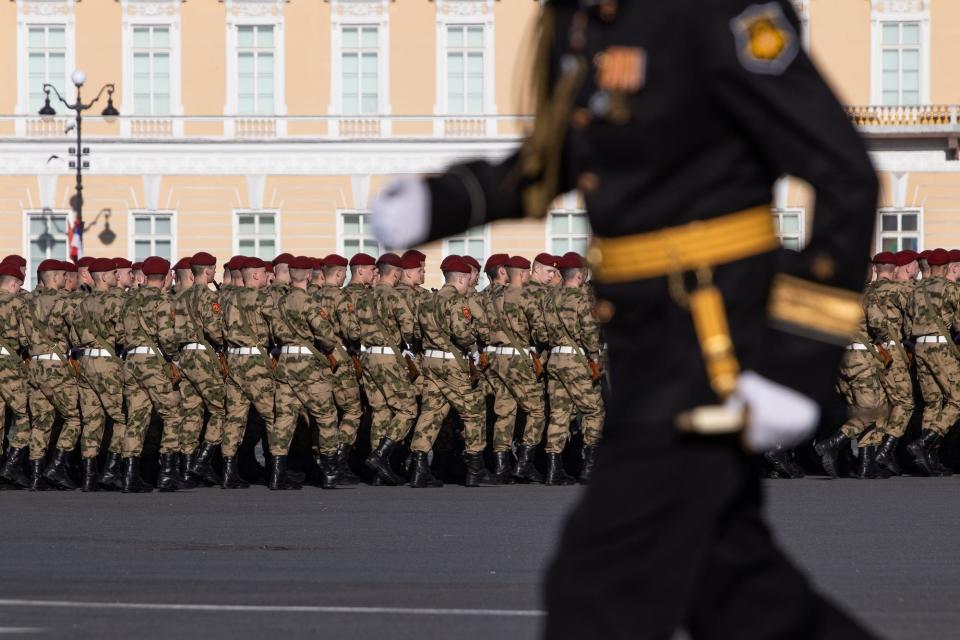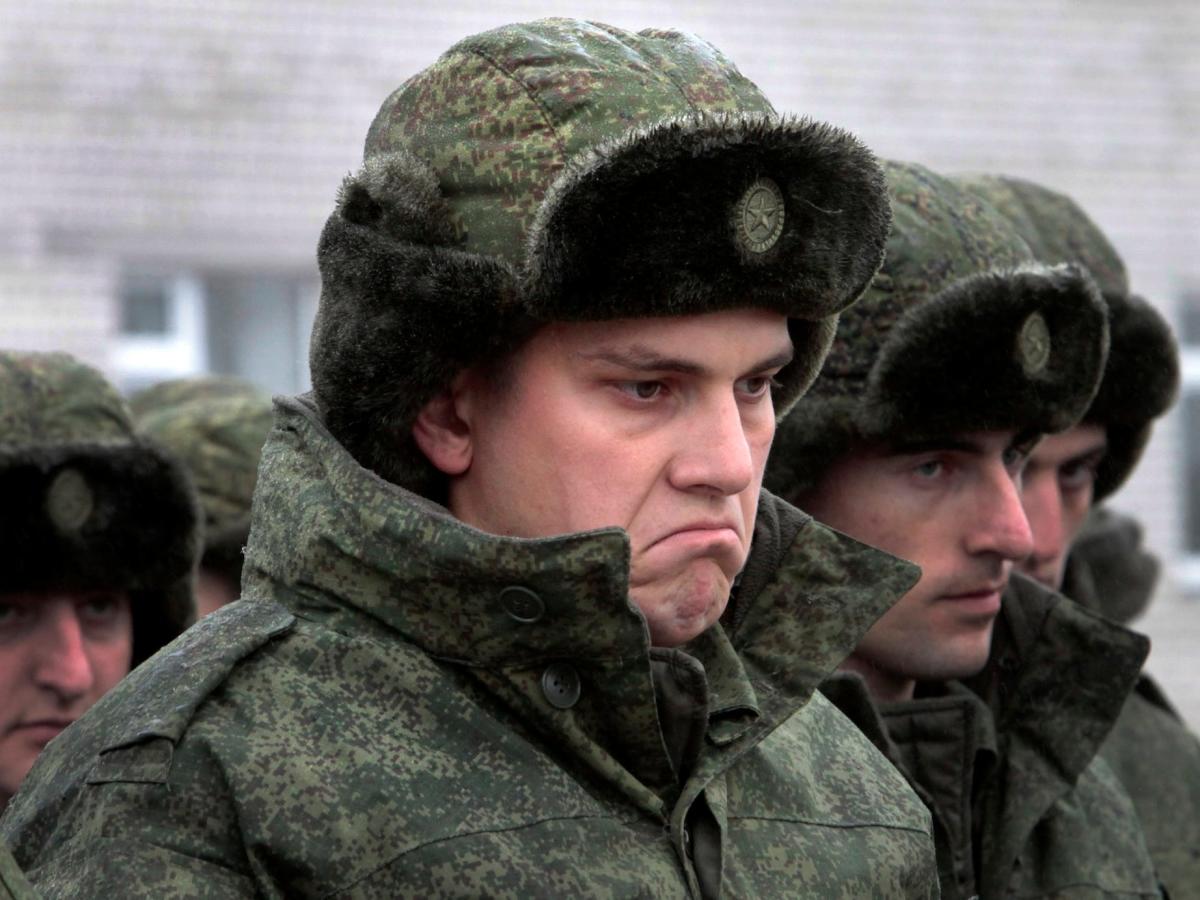-
Russia’s huge cost in invading Ukraine is fallout for not following its own military doctrine.
-
Russian commanders have frequently erred on the basics of military operations, a RAND expert said.
-
The Russians also lacked the invasion force size necessary to follow their warfighting doctrine.
The US Army’s new manual on Russian tactics is an impressive-looking document. It’s 280 pages packed with details and diagrams of how Russian soldiers are supposed to fight.
It is also evidence of a major reason why Russian troops have often fought poorly in the Ukraine war: they are not following their own playbook.
“A lot of the basic elements of that doctrine are sound enough that they could form a basis for successful operations,” Scott Boston, a Russia military expert for the RAND Corp. think tank, told Business Insider. “But you do have to follow them.”
To be clear, the US Army’s manual — ATP7-100.1, “Russian Tactics” — specifies that it “is not meant to represent how the Russians are currently fighting in Ukraine.” Nonetheless, armies try to fight according to their doctrine, or the fundamental principles that are intended to guide military operations.
For example, when a Russian division or brigade conducts an assault, units are supposed to advance in multiple echelons — or waves — of troops and tanks, tightly synchronized with reconnaissance, flank protection, engineering, artillery and air defense elements. The goal is to hit hard, move fast, breach the defenses and advance deep into the enemy rear. To minimize the resistance they face, assault troops should concentrate into multiple columns to “spread the attacking units in both width and depth to disperse and reduce the effects of nuclear or precision fires,” according to the ATP7-100.1 manual.
But when Russia tried to seize Kyiv with a lightning advance in the opening days of the war, armored columns were sent down narrow, congested roads. Bottled up by roadblocks and ambushes, they were decimated by Ukrainian artillery, drones and anti-tank missiles. Nor does the manual describe how the Russian Army is fighting today. Instead of rapid and well-coordinated maneuver with its once-vaunted Aerospace Forces, attacks rely on obliterating Ukrainian defenses with artillery or glide bombs, or swamping them with large numbers of freed convicts and other “disposable infantry.”
The cost has been enormous: an estimated 450,000 Russian casualties and 3,000 tanks destroyed. Moscow’s best pre-war units have been decimated, and its best tanks and other equipment wrecked.
“Doctrinally sound attacks can still fail,” Boston pointed out. “But a lot of their mistakes were failures to follow doctrinal guidance that is there for good reason. Like, have a guard force out in front so your main body doesn’t blunder into combat and become decisively engaged. Don’t try to send your entire force down too few roads. Don’t leave your support troops unprotected. These were pretty basic things.”

Assessing current Russian doctrine is difficult. Much of it is derived from the Soviet era of rigidly controlled mass armies. “The commander directs the fight, is responsible for the main elements of the plan, and generally does not expect initiative or flexibility to nearly the same degree from his subordinates, compared with a good US commander,” Boston explained.
Yet military reforms enacted after 2008 were supposed to create smaller and more agile Western-style forces. “When that system failed for them in the initial months after February 2022, they reverted to older, more traditional approaches that eventually included much more emphasis on mass,” said Boston, a former US Army artillery officer.
However, the problem may not have been Russian doctrine as much as the overall strategy of the Ukraine war. Soviet plans to invade Western Europe were based on fielding millions of Soviet and Warsaw Pact troops supported by huge stockpiles of weapons and supplies. With an initial assault force of just 180,000 soldiers attacking across a 600-mile-wide front against a smaller but still substantial Ukrainian army, Russia couldn’t generate the overwhelming mass that its doctrine counted on. Russian leaders also expected — as did many Western experts — that Ukrainian resistance would collapse and the country would be swiftly occupied. Assault units weren’t even briefed about the attack until just before the war began.
“It’s not impossible to win battles with an inflexible army, but in order to have a reasonable chance of doing so it helps a lot to have a good plan,” Boston said. He pointed to the US invasion of Iraq in 2003: commanders hoped that Iraqi forces wouldn’t offer strong resistance, but the invasion plan assumed they might. “It would have been irresponsible for the US military to do otherwise. But Russia’s plan was that level of irresponsible. Units were directed to move into Ukraine and seize key locations on aggressive timetables and without meaningful warning or time to plan for things to go wrong. Doctrine and training can only do so much when you’re sent to do the wrong thing with the wrong tools for the job.”
To be fair, some areas of Russian doctrine have proven quite sound, especially on the defense, where Russia stopped Ukraine’s counteroffensive last summer. “There are plenty of aspects to their defense that are entirely consistent with their historical practice and doctrine,” Boston said. “And in some cases, they’ve improved on their doctrine such as by increasing the depth and density of minefields.”
One question will tantalize historians for years to come: could Russia have seized Kyiv — and probably won the war — in the first days of the invasion? “This is a tricky counterfactual,” said Boston. “If Russia had made more adequate preparations, Ukraine could have noticed and reacted differently. But Russia had some substantial advantages that they squandered with the initial plan and with their slow adaptation over time. If Russia had tried a better plan, things would have gone much worse for Ukraine much more quickly.”
Ironically, Boston feels maligning Russian military prowess does a disservice to Ukrainian skill. If the Russian military was that bad, then maybe the Ukrainian military wasn’t that good? “We underrate how much damage the Ukrainians did against real Russian military capability if we think that that the Russians were all just terrible,” Boston said. “I don’t think they were terrible. I think they were terribly wrong-footed by their leadership.”
Michael Peck is a defense writer whose work has appeared in Forbes, Defense News, Foreign Policy magazine, and other publications. He holds an MA in political science from Rutgers Univ. Follow him on Twitter and LinkedIn.
Read the original article on Business Insider
